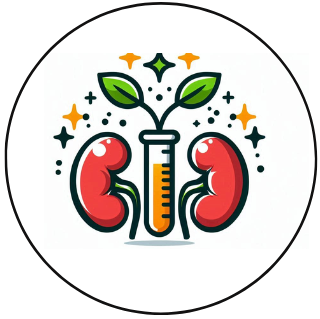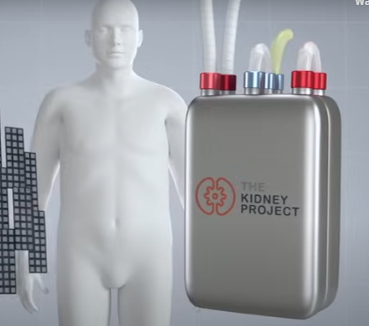Chronic kidney disease is no small potatoes when it comes to global health issues. It quietly affects millions, often without obvious symptoms until things get complicated. We’re talking about a condition that can sneak up on you, becoming life-threatening if left unchecked.
Now, let’s talk treatments. Dialysis and transplants are the go-to options, but they’re no walk in the park. Dialysis is like a part-time job—demanding, repetitive, and frankly, not the quality of life anyone dreams of. Transplants, on the other hand, are limited due to organ shortages and come with a hefty hitch: the chance of rejection.
Enter the artificial kidney, a game-changing idea that’s been floating around medical circles for decades. Imagine a device that could work just as well as your natural kidney, without the constant hospital visits or the stress of waiting for a donor match. Sounds like science fiction, right? But it’s closer to reality than you might think.
This development isn’t just about improving individual lives, though that’s a huge part of it. It’s about sparking a global healthcare revolution, shifting how we approach kidney treatment altogether. With chronic kidney disease on the rise, innovations like an artificial kidney not only offer hope but are fast becoming a necessity.
Behind the Breakthrough: UCSF’s Role in Artificial Kidney Research
The research muscle driving the artificial kidney forward belongs to the University of California, San Francisco (UCSF). With an impressive armory in their pharmacy department, UCSF has been a powerhouse in healthcare innovations, setting the bar high with their daring research. It’s more than just progress; it’s about making a real impact on people’s lives. Just imagine, no more kidney transplants or immunodepressant drugs for the rest of your life. These have their own set of concerns. No more dialysis! People with CKD could actually live a near normal life.
UCSF’s key folks in this journey include some top-notch researchers who are dedicated, not just to the science, but to the potential life-changing impacts of their hard work. They’ve hit significant milestones that push this project closer to reality every day. It feels like each step is getting humanity one step closer to saying goodbye to the old ways of managing kidney failure.
What’s even more exciting is how UCSF doesn’t work alone. Their collaborations reach across countries and companies, pulling in the best minds to tackle this challenge. Whether it’s a tech firm down the road or a university halfway around the world, UCSF knows that teamwork is the secret sauce in turning the dream of an artificial kidney into reality.
Behind every breakthrough, there’s a story worth telling. The researchers have plenty of those—times when a tiny discovery made a big impact or when a tough day ended in breakthrough solutions. These stories are what transform abstract science into relatable tales, showing the human side of relentless research and innovation.
From Lab to Life: Current Status and Human Testing Updates
Progress in human testing marks a significant stride forward for the artificial kidney. After clearing successful preclinical trials, the project is now navigating the complex world of human testing. This phase is crucial, as it focuses on ensuring the device functions safely and effectively in real-world conditions.
So far, the results are promising. Early data suggests that the artificial kidney performs its job without the heavy baggage of complications typically linked to dialysis or transplant procedures. That’s major because it means a step closer to offering a life free from the cumbersome requirements of traditional treatments.
Testing isn’t without bumps in the road. Challenges arise, whether they’re technical hiccups or unforeseen biological responses. The good news? These challenges are met with rigorous problem-solving and adaptability. Every obstacle provides new insights, driving the project forward with renewed purpose and precision.
The experiences shared by clinical trial participants provide invaluable insights. These individuals, often brave enough to navigate uncharted medical waters, offer firsthand accounts of how this innovation is reshaping expectations for kidney disease management. Their stories are not just testimonials; they’re the beating heart of this pioneering effort.
Towards the Future: Projected Timeline and Public Accessibility
Looking ahead, the timeline for bringing the artificial kidney to the masses is in motion. Current projections suggest that it could be available to the public within the next few years, as early as 2030, contingent on clearing the last hurdles in ongoing trials and regulatory pathways. These timelines may feel like an eternity to those in need, but they highlight the dedication to safety and efficacy.
The path to market isn’t without its share of regulatory red tape. Getting a new medical device approved means jumping through countless hoops, all designed to ensure that what ends up in clinics is both safe and effective. This process, though lengthy, is crucial and involves working closely with institutions like the FDA to navigate these formalities.
Once the artificial kidney navigates through these regulatory waters, cost and accessibility could become the next big discussion points. Work is underway to ensure that when it’s available, it won’t just be something only a few can afford. Balancing innovation with affordability is a must—no one wants to see this become a solution only available to the wealthy.
Aside from technical and financial challenges, the ethical considerations of introducing such a device are significant. Public perception will play a large role in acceptance, as well as acceptance from medical insurance providers to allow this as an accepted and covered treatment. Education and transparency will be key in building trust and understanding the device’s real impact on life quality.
The future holds a promise of better healthcare outcomes, and everyone involved in this innovation is committed to turning that promise into reality. Hope is set on the horizon with efforts being made to overcome obstacles with grit and determination.

